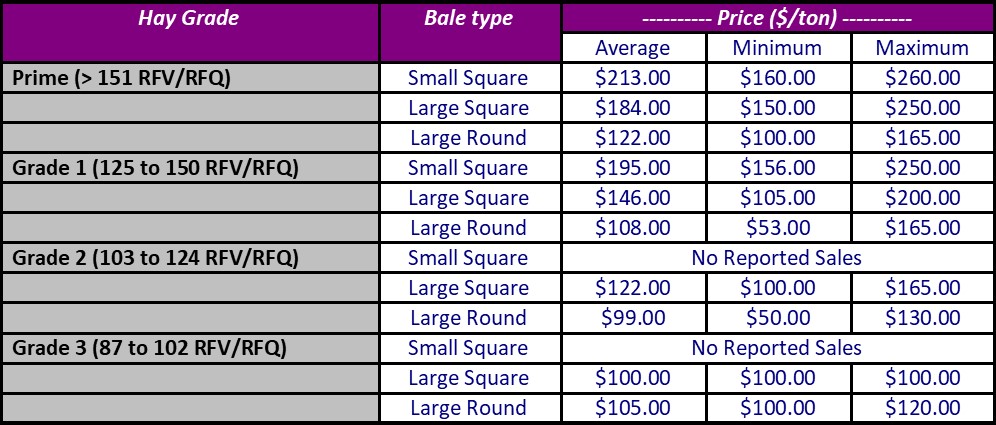10-23-2017 Hay Market Report
FULL REPORT previous HAY MARKET REPORTS
Read More...Hay Market Report 10-09-2017
FULL REPORT previous HAY MARKET REPORTS
Read More...Hay Market Report 09-25-2017
FULL REPORT previous HAY MARKET REPORTS
Read More...Saving Time and Fuel During Tillage
Saving Time and Fuel During Tillage by Matthew Digman1 There are many ways to save fuel in tillage field operations: not tilling, choosing a minimum tillage operation over a heavier one, and ensuring your tractor and implement are set up properly. As with any farm operation, the value of tillage must be weighed against its cost. […]
Read More...Managing Forage in Silo Bags
Managing Forage in Silo Bags by Craig Saxe Introduction Maximizing ruminant livestock production is dependent upon, producing and storing quality forage. Once the crop has been harvested, loss of quality may occur simply because steps were not taken to correctly manage the forage during filling and storage. This fact sheet reviews bagged silage recommendations that help […]
Read More...Hay Market Report 9-11-17
FULL REPORT previous HAY MARKET REPORTS
Read More...Hay Market Report 08-28-2017
FULL REPORT previous HAY MARKET REPORTS
Read More...Slobbers in Horses
Slobbers in Horses Information taken from the Ontario Ministry of Agriculture, Food and Rural Affairs at: http://www.omafra.gov.on.ca/english/livestock/horses/facts/info_slobbers.htm Horses on pasture will sometimes start salivating profusely in a cool, wet spring or fall. Affected horses commonly show no abnormal clinical signs except the profuse frothy salivation, which is not life threatening though of concern to horse […]
Read More...Clover Causing Sunburn and Liver Problems in Horses
Clover Causing Sunburn and Liver Problems in Horses Article adapted from M. Murphy, DVM, PhD and K.Martinson, PhD University of Minnesota, July 7th, 2012 Clovers are usually considered a beneficial pasture forage. However, alsike clover (Trifolium hybridum) and red clover (Trifolium praetense) are considered toxic when infected with the mold Cymadothea trilolii that causes Black Blotch disease in clovers. […]
Read More...



